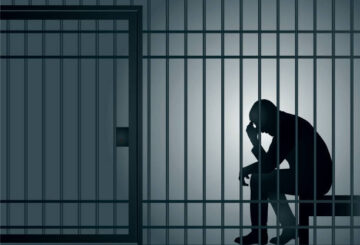“It’s a runaway train”
A recent joint Senate-Assembly public hearing helped make it clear where New York State is headed on a radical remaking of our energy landscape: nobody truly knows.
Remember that last December, the state’s Climate Action Council released final recommendations to implement far-reaching renewable energy mandates for all New Yorkers. These mandates were set in motion four years ago by the “Climate Leadership and Climate Protection Act” (CLCPA) signed into law by then-Governor Andrew Cuomo and the Legislature’s Democrat majorities. Since Governor Hochul took over after Cuomo resigned in August 2021, she has pushed the pedal to the floor on these extreme energy orders.
At the daylong public hearing in Albany on January 19, comments from many Democrat majority members of the Senate and Assembly committees on Finance, Energy and Telecommunications, and Environmental Conservation — as well as those who testified in favor of the plan as it stands – revealed that this Legislature isn’t exactly sure how much it’s going to cost, isn’t all that concerned whether it’s practical (we’ll just figure it out as we go along), and has no idea if it’s remotely sustainable for future ratepayers, taxpayers, manufacturers, or local economies. Furthermore, they are clearly willing to consider whatever tax it takes, to sacrifice jobs, and to grant unilateral authority to the executive branch to keep moving forward on this radical plan as rapidly as possible, whatever the consequences may be.

For example, to help the state afford it, proposals have already been introduced that would raise gasoline costs by an additional 55-cents-per-gallon and drive up home heating fuel costs by another 26%.
It’s a runaway train. New Yorkers already bearing a heavy burden for state government mandates imposed under extreme executive control throughout the COVID-19 pandemic better be ready for much more of the same, and then some, if these energy mandates keep marching forward.
The hearing made it clear that this plan, which advocates readily admit will cost at least $270 billion, has never been accompanied by any credible cost-benefit analysis of the impact of these actions on energy affordability, reliability, or sustainability. It’s more than likely to be a much higher price tag.
Soon, for example, millions of homeowners could be forced to convert their natural gas, propane, or heating fuel oil furnaces to electric at estimated costs of as much as $40,000 per household. In just two years, 2025, you will no longer be able to build a new single-family home or low-rise residential building anywhere in New York with a natural gas, propane, or fuel oil furnace or boiler. The continued use of natural gas/propane/fuel oil appliances for home heating, cooking, water heating, or clothes drying will be banned in 2035.
I have joined legislative colleagues and others over the past several years to sound the alarm on what’s coming, particularly over how these irrational and unsustainable mandates will come at great costs and consequences. Far too many New Yorkers remain in the dark about the plan’s extreme efforts to eliminate reliable, affordable sources of energy.
Many of us who have raised these concerns have also fully encouraged New York’s past efforts to increase cleaner and renewable power. These efforts have been remarkably successful. They have already made our state a national and worldwide leader accounting for just 0.4% of global carbon emissions. Nevertheless, this new plan will have no impact on the actions of neighboring states or, even more critically, on China, India, or Russia, which account for 40% of global emissions.
To say it another way (and it’s a critical point): Even if New York State reaches zero emissions, there will be zero impact on our own climate or the global climate at large — yet all New Yorkers will pay a heavy, heavy price.
New York State should continue to be a leader. At the same time, it remains important to keep sounding the alarm that the state’s energy strategy as it stands is not realistic or achievable, and unreasonably risks grid reliability, affordability, and sustainability.
Governor Hochul is about to unveil her proposed 2023-2024 state budget and work with her Democrat partners in the Senate and Assembly to put the final additions on what will wind up being New York’s largest-ever spending plan. It bears watching, for all of us, especially on the energy front.





